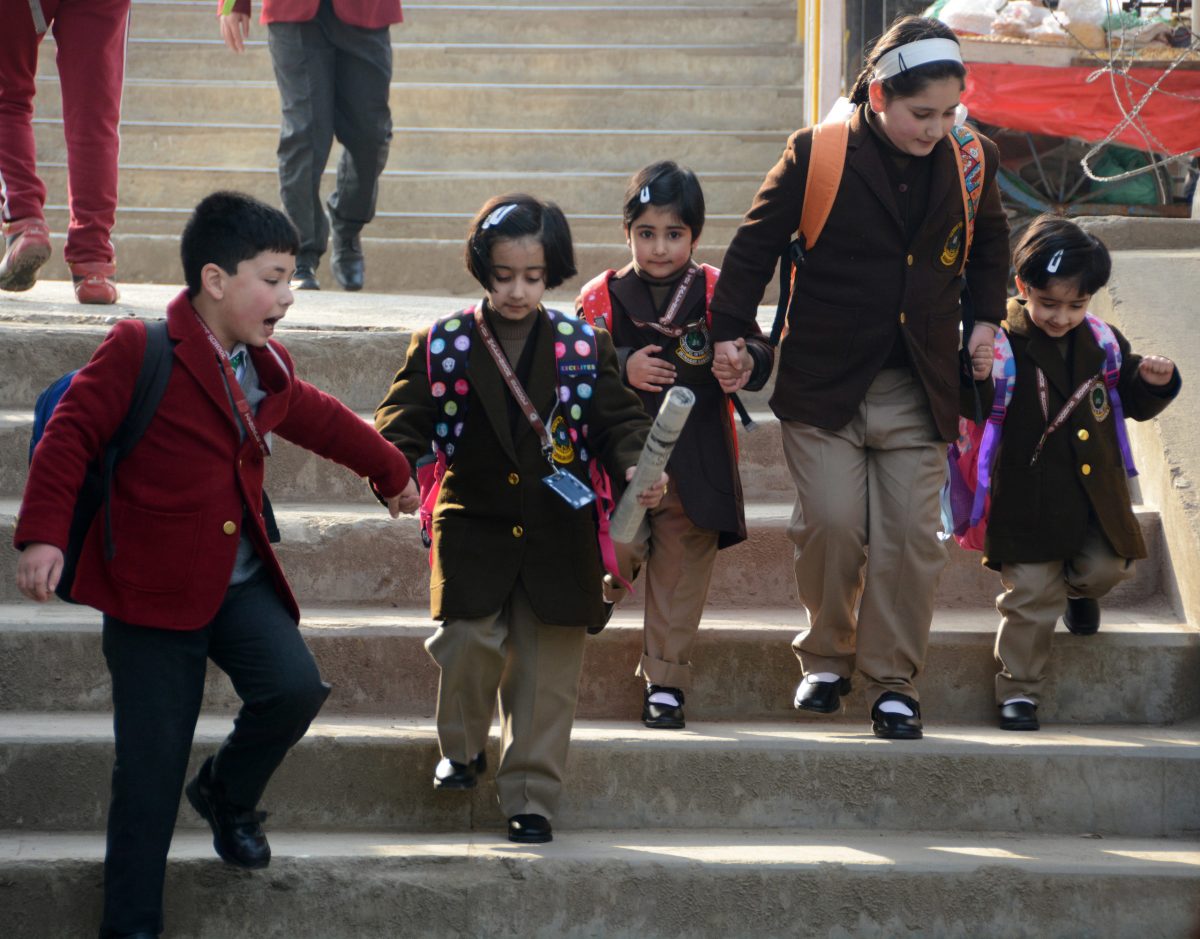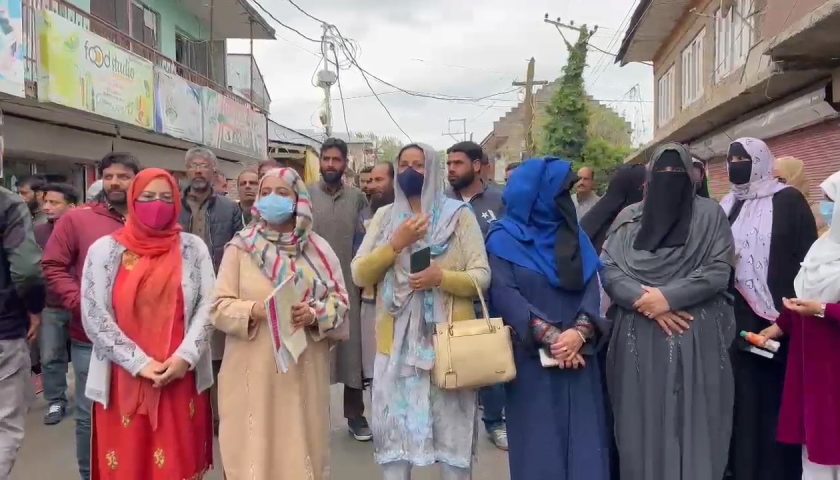Schools across Kashmir have reopened after nearly two years of home learning forced by back-to-back lockdowns.
Initially closed after the disputed region’s partial autonomy was revoked in 2019, the schools were shut again after the coronavirus was declared a pandemic in March 2020.
It was the day Waseem, a 16-year-old grade 10 student had been waiting for. “We were away from friends, from school which impacted our mental health. We used to feel depressed as we had no one to talk to and our classes also got impacted.”
But the children have returned to somewhat unfamiliar terrain. There is no rushing in or hugging classmates this time. In the region’s main city Srinagar, students from senior grades at Little Angels school lined up at the entrance to get their temperatures checked, maintaining a safe distance and keeping their masks on at all times.
No one is complaining though. All agree it is a relief to get back to physical classes and interact with friends and teachers once again.Only those students who have a signed no-objection certificate from parents have been allowed back in. This absolves the school of any blame in case of health issues that occur due to the resumption of physical classes.
Despite fewer numbers in attendance, students say they understand the need to remain cautious with masks and social distancing. “We are happy that schools have reopened but we don’t want to become infection carriers. We have families, our teachers too have families,” says 15-year-old student, Syed Syedain Rizvi.
“We have to undergo so many difficulties like thermal scanning, maintain social distance, sanitise after every 20 minutes and wash our hands often. Even though we face problems, it is much better than online classes.” Rizvi said online classes “caused problems in our eyes and we were getting headaches”.
“Parents couldn’t understand that we were studying, some parents are old school and thought their children are playing,” he said. The decision to open schools comes following a consistent decline in COVID-19 cases in the region. The federally-administered territory of Jammu and Kashmir has reported nearly 125,000 cases since the pandemic began, with more than 1,950 deaths. The region currently has fewer than 900 active COVID-19 cases.
COVID-19 infections had been plummeting in India since September, but cases have been on a rise in recent days in some parts of the country. India has recorded more than 11 million cases, second in the world behind the United States, and has reported more than 158,000 deaths.
Back-to-back lockdowns
Indian-administered Kashmir has faced prolonged lockdowns over the last two years since New Delhi revoked the Muslim-majority region’s semi-autonomous status in 2019 and divided it into the federally governed territories of Jammu-Kashmir and Ladakh.
Access to online education had also been difficult with restrictions imposed on internet use. Now, as schools and colleges resume physical classes, many parents are worried about the health and safety of their children. Riyaz Ahmad, a government employee, has been teaching his young children at home.
“The schools will open and we are thinking about sending our kids but we are afraid,” he says. “Schools will reopen after two years. For the rest of the world, the lockdown has been for a year due to COVID but here it has been almost two years after Article 370 was revoked,” he added, referring to the provision in India’s constitution which granted Indian-administered Kashmir its partial autonomy.
Ahmad said he is worried about the health of the children as schools reopen. “We are living in COVID times, we faced it but we don’t know about the kids, they can touch anything in school. Will they follow all the SOPs (standard operating protocols)?” he wondered.
“But it is also about the career of your children as they are sitting at home for two years. We are helpless and will send our children to school,” he added. The school authorities say they are doing their best to follow guidelines and recommended health protocols.
“Every student is being checked for the fever, anybody found with high fever is being sent back to home. And we are not making him enter the school premises so that others don’t catch infection. We are properly following all the guidelines as determined by the state government,” says Amjad Rathore, headteacher of Little Angels School.
According to a recent UNICEF report, the closure of 1.5 million schools due to the coronavirus pandemic and the resultant lockdowns in 2020 impacted 247 million children enrolled in elementary and secondary schools in India. The report estimated that only one in four children in India has access to digital devices and internet connectivity, a reflection of the huge digital divide across the country.
“What I find is that physical attendance in the school is very important and it will definitely change the mental ability and agility of the children at the same time. No doubt they are going through stress, sitting at home for a long period now. They need to come out of their homes,” says Rathore.
As for the teachers, they are delighted to finally have their children back in class. “We feel like we are not teaching students we are teaching some non-living things, those non-living things which doesn’t give any response to our questions or our teachings,” says Little Angels School teacher, Mir Kouser.






